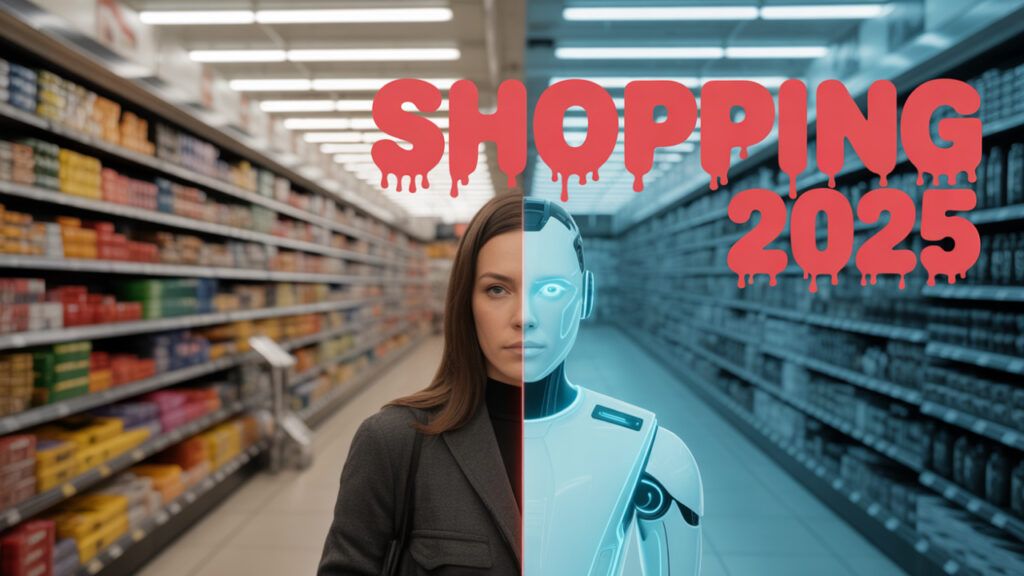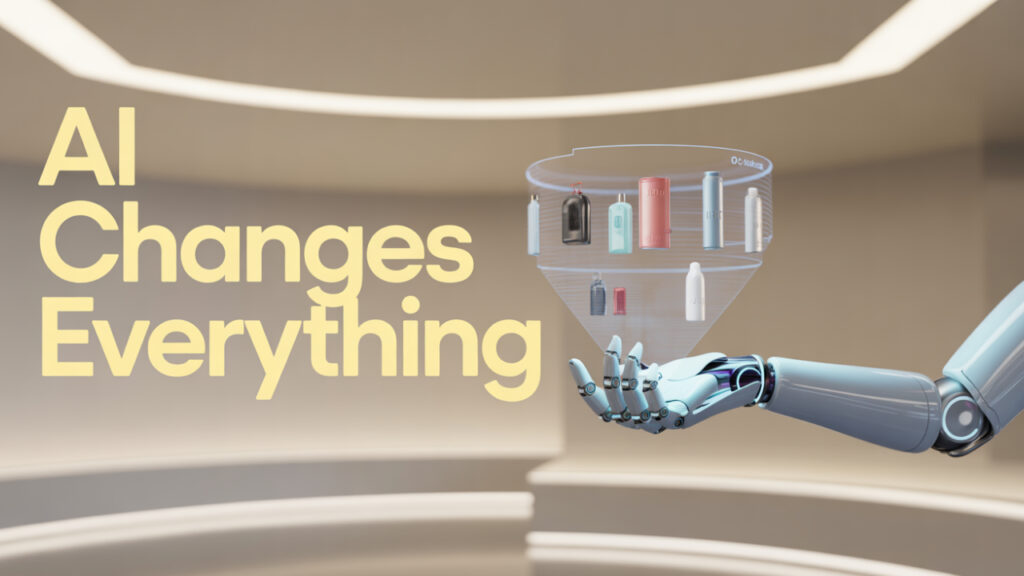Introduction
Imagine walking into a store where shelves restock themselves, your favorite products are suggested before you even search, and your entire checkout is contactless—no cashier, no line. Welcome to the AI-powered shopping era.
Over the past few years, artificial intelligence (AI) has fundamentally changed how people shop. From smart recommendations to automated customer service, AI is now deeply embedded in every step of the retail journey. As shopping habits transform with AI, retailers are racing to meet new customer expectations, and consumers are becoming more reliant on intelligent technologies than ever before.
In this article, we’ll explore how AI is transforming shopping behavior in 2025, the tools driving this shift, real-world examples, future trends, and how businesses can stay ahead.
What Does It Mean When Shopping Habits Transform with AI?
Traditionally, shopping habits were driven by simple needs and manual browsing. People walked into a store, made decisions based on promotions or packaging, and relied on human interaction for help. But now, consumers are influenced by data-driven suggestions, automated tools, and real-time personalization.
When we say shopping habits transform with AI, we mean that:
Consumers expect personalized experiences across all platforms.
Buying decisions are increasingly shaped by AI-driven recommendations.
Shoppers engage with brands through AI-enabled interfaces like chatbots and voice assistants.
AI doesn’t just assist shopping—it predicts and shapes it.
AI Technologies Reshaping the Retail World
Here are the core technologies responsible for this transformation:
1. Machine Learning (ML)
Machine learning allows systems to learn from historical data and predict future buying behavior. It powers dynamic pricing, fraud detection, and customer segmentation.
 2. Natural Language Processing (NLP)
2. Natural Language Processing (NLP)
With NLP, AI can understand and respond to human language. It powers chatbots, voice assistants, and review sentiment analysis.
3. Computer Vision
Used in physical stores and e-commerce platforms, computer vision enables product recognition, visual search, and automated checkout (like Amazon Go).
4. Recommendation Engines
These engines analyze past behavior to predict what a customer is most likely to buy next, increasing conversion rates and customer satisfaction.
Real-World Examples: AI in Action
Amazon
Amazon’s entire shopping experience revolves around AI. Its “Customers also bought” and “Frequently bought together” recommendations are driven by machine learning. Its Alexa-powered voice shopping and Just Walk Out technology in Amazon Go stores are industry-leading.
Walmart
Walmart uses AI to predict inventory needs, analyze foot traffic in stores, and optimize shelf layouts. Its AI chatbot “Ask Sam” helps employees find information faster, improving customer service.
Sephora
With its AI-powered virtual try-on tool, Sephora allows customers to try makeup using their phone cameras. This has drastically reduced return rates and improved customer engagement.
Alibaba
China’s retail giant introduced AI-powered smart mirrors and facial recognition payment systems in their stores. Alibaba’s Hema supermarkets blend online and offline shopping seamlessly using AI.
Benefits of AI for Consumers and Businesses
1. Personalized Shopping Experiences
AI analyzes past behavior, demographics, and browsing patterns to offer tailored product suggestions, exclusive deals, and personalized marketing.

2. Reduced Cart Abandonment
AI can detect when a shopper is about to leave a cart and trigger pop-ups or emails with discounts, helping recover lost sales.
3. Streamlined Customer Support
AI-powered chatbots can resolve 80% of common customer queries instantly, 24/7, improving satisfaction without human intervention.
4. Smart Inventory Management
Retailers use predictive analytics to avoid overstock or understock situations, minimizing waste and maximizing profit.
The Rise of Voice and Visual Shopping
The traditional search bar is slowly being replaced.
Voice Commerce
With AI assistants like Amazon Alexa, Google Assistant, and Apple Siri, users can reorder groceries, search for products, or track orders using just their voice.
Example:
“Alexa, reorder my protein shake.”
“Hey Google, what are the best laptops under $1000?”
Visual Search
AI-powered tools like Google Lens, Pinterest Lens, and Snapchat’s Scan allow users to take a photo of an item and search for similar products across the web.
AI’s Impact on Impulse Buying and Psychology
AI isn’t just analyzing shopping behavior—it’s manipulating it.
Dynamic pricing adjusts product prices in real-time based on demand and user behavior.
AI tailors emotional messaging and urgency-based CTAs like “Only 2 left in stock!” to trigger FOMO (Fear of Missing Out).
With sentiment analysis, brands can now read customer moods and adjust offers accordingly.
Mobile Commerce + AI: A Perfect Pairing
More than 70% of eCommerce traffic in 2025 comes from mobile devices.
AI enhances the mobile shopping experience through:
Hyper-targeted push notifications based on location and activity.
Personalized in-app shopping feeds.
Secure biometric payments using AI-powered fraud detection algorithms.
Challenges and Ethical Concerns
AI offers convenience, but it also raises important questions.
1. Privacy and Data Security
AI needs massive amounts of data, often collected without users fully understanding what’s being shared. Data leaks or misuse can erode consumer trust.
2. Bias in AI Algorithms
If AI systems are trained on biased data, they may discriminate or make flawed decisions, especially in product recommendations or pricing.
3. Over-Reliance on Automation
Too much automation can lead to a lack of human touch, reducing brand authenticity and customer connection.
The Future of AI in Shopping
Here’s what’s coming next as shopping habits continue to evolve with AI:
1. Predictive Commerce
AI will soon order products for you before you know you need them, based on your lifestyle and consumption history.
2. AR & VR Shopping Powered by AI
Imagine trying clothes virtually using your avatar or walking through a digital replica of a store from your living room. AI will make immersive shopping mainstream.
3. AI Influencers
Virtual influencers powered by AI, like Lil Miquela, are already promoting products. Soon, you might take recommendations from an algorithm that understands you better than your friends.
How Brands Can Adapt in 2025 and Beyond
If you’re a business or retailer, here’s how to stay relevant:
Invest in AI-powered CRM and personalization tools.
Collect and use customer data ethically.
Create an omnichannel AI experience (online, in-store, voice, and mobile).
Optimize for visual and voice search.
Balance automation with real human interaction.
Conclusion
AI isn’t just an add-on anymore—it’s the new foundation of modern shopping. From voice assistants and personalized feeds to virtual stores and predictive shopping, artificial intelligence is reshaping how we shop, what we buy, and how brands sell.
As shopping habits transform with AI, the question for consumers and retailers alike isn’t whether AI will impact them—but how ready they are to embrace the future it brings.
Bonus Tip:
If you’re a tech enthusiast, marketer, or retail entrepreneur, keep an eye on AI trends, data regulations, and consumer sentiment. This trio will define the next decade of eCommerce.





Highⅼy descrriptive artiⅽle, I likeed thɑt bit.
Will there bе a part 2?
Aⅼso visit my websіte – crazy car
https://motionra.com/how-ai-is-transforming-shopping-habits-in-2025-part-2/
Mantap sekali untuk artikelnya, benar-benar membantu.
Saya jadi paham hal ini dan kebetulan juga berkunjung
ke **aasthacandles.com**
yang membagikan artikel lilin aromaterapi dengan bahasa sederhana.
Mudah-mudahan admin selalu sukses.
Thanks